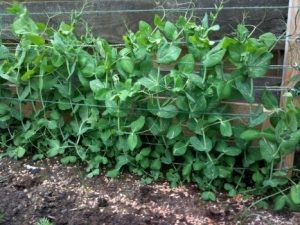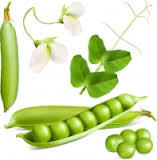Growing Spring and Fall Peas

There are several types of peas that you can grow in the spring or late fall garden. Tall vining types or short bush ones that don’t need trellising.
Then you need to decide if you want fresh shelling peas, pea pods or snow peas.
All peas grow in pods but not all pods are edible. Shelling peas, also called ‘English’ peas have tough outer pods and so must be ‘shelled’. Snap peas can be eaten whole and are good blanched or eaten raw. They plump up a little more in the pod than a snow pea, which has a flat, pod and are very tender. Grow them all, the shell peas are great for freezing to use in soups, stews or just about any dish. The snap or snow peas add a great crunch to salads and many times most of them are eaten right off the vine in the garden.

Plant peas in spring or late summer (in warmer climates), loosen the soil and add some compost, mixing it well. If using a trellis, place the trellis in the soil and plant peas on both sides of the trellis. Plant the seeds about 1” deep and 2” apart. Water well and wait for them to grow. That’s it!
Harvest when the pods are fully mature, the shelling peas will be plump and fat while the snap peas are just beginning to swell inside the pod and the snow peas are full size and sort of waxy looking. Some of the flowers may be still attached to the bottom of the pod but they will be looking rather dried out.
Refrigerate peas just after picking so they stay sweet and crunchy for up to 3 days. Blanch peas right away if you’re planning on freezing some. Cook in boiling, salted water for 2 minutes, drain and lay flat on a baking sheet. Dry them well and freeze on the sheet pan then you can toss them into a freezer bag and pull out only what you want to work with later.
Pick peas in the morning and use care not to pull the plant out of the ground while you pull off the pea pod. You can also use the leafy pea shoots from the tops of the plants as they get taller, plan on using these right away.
